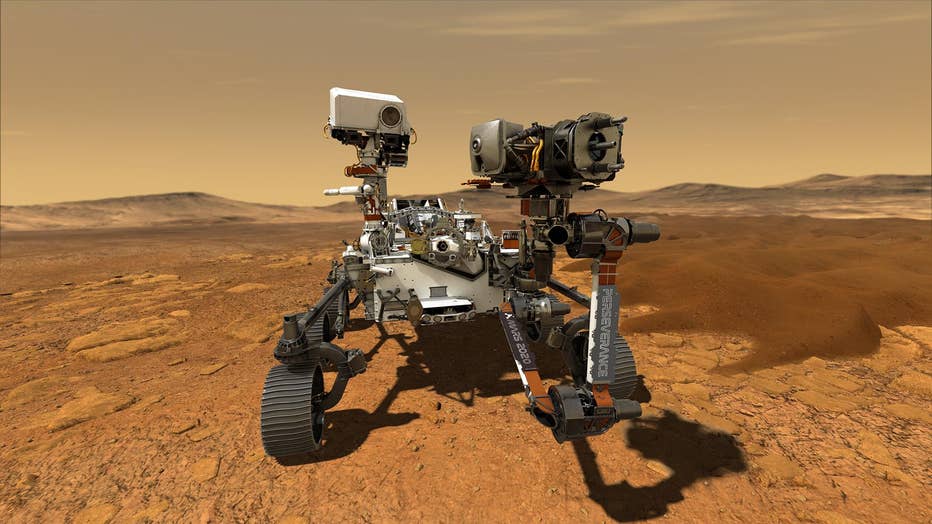Perseverance rover expected to touchdown on Mars on Thursday

Mars rover landing Thursday afternoon.
NASA's Perseverance Rover, launched into deep space from the Kennedy Space Center last July, will land on Mars on Thursday afternoon.
LAKE MARY, Fla. - NASA on Wednesday provided an update about the upcoming landing of the Mars Rover Perseverance.
Perseverance, the space agency's most advanced rover yet, will spend the new two years looking for signs of life on the Red Planet. The rover will complete its 300-million mile journey on Thursday afternoon, landing at approximately 3:55 p.m. EST.
"It is of course trying to make significant progress in answering one question that has been with us for many centuries. Namely, are we alone in the universe?" said Thomas Zurbuchen, a NASA associate administrator for science.
The rover is headed for a compact 5-mile-by-4-mile (8-kilometer-by-6.4-kilometer) patch on the edge of an ancient river delta. It’s filled with cliffs, pits, sand dunes, and fields of rocks, any of which could doom the roughly $3 billion mission. The once submerged terrain also could hold evidence of past life, all the more reason to gather samples at this spot for return to Earth 10 years from now.

This illustration depicts NASA's Perseverance rover operating on the surface of Mars. Perseverance will land at the Red Planet's Jezero Crater a little after 3:40 p.m. EST (12:40 p.m. PST) on Feb. 18, 2021. (Source: NASA)
It will take the rover seven minutes to get through the atmosphere, speeding at 12,000 miles per hour, before touching down on the Red Planet. Astronomers call that the "seven minutes of terror." Officials believe those minutes will be excruciating as they await confirmation of a safe landing.
MORE NEWS: Florida getting influx of coronavirus vaccines after feds increase shipment

Perseverance rover expected to touchdown in Mars on Thursday
Perseverance, the space agency's most advanced rover yet will spend the new two years looking for signs of life on the Red Planet.
Scientists have wanted to get hold of Mars rocks ever since NASA’s Mariners provided the first close pictures a half-century ago. NASA is teaming up with the European Space Agency to do just that. The bold plan calls for a rover and return rocket to launch to Mars in 2026, to retrieve Perseverance’s stash of samples.
"This container can hold up to 30 samples and much like a baton in a relay race. This container is the heart of sample return because the sample tubes will be filled by Perseverance. The Earth-return orbiter will bring this container, triply sealed, back to the earth," said Bobby Braun, an aerospace engineer.
TRENDING: Gasparilla parade officially canceled for 2021

This illustration depicts NASA's Perseverance rover operating on the surface of Mars. Perseverance will land at the Red Planet's Jezero Crater a little after 3:40 p.m. EST (12:40 p.m. PST) on Feb. 18, 2021. (Source: NASA)
NASA expects to bring back the rocks as early as 2031, several years before the first astronauts might arrive on the scene. The rover’s super sterilized sample tubes are the cleanest components ever sent into space, according to NASA, to avoid any contaminating traces of Earth.
Scientists previously said that they know Mars once had all the right ingredients to support life. In the end, NASA hopes planning and human curiosity will result in more knowledge about the world -- and the universe -- around us.
"It is important if we happen to find life, the two places that we know have habitable environments, are earth and mars," said Ken Farley, a scientist with the Perseverance project.
The Associated Press contributed to this report.
Tune in to FOX 35 Orlando for the latest Central Florida news.

